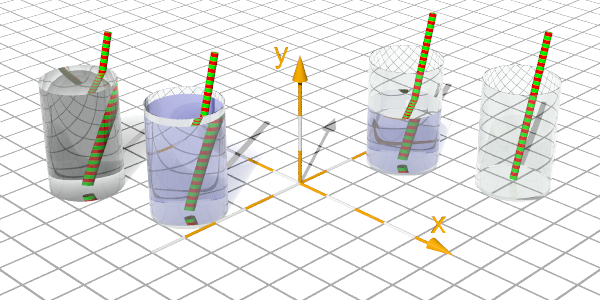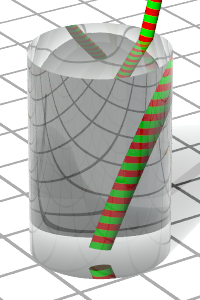User:Le Forgeron/HowTo/Perfect glass
< User:Le Forgeron | HowTo
Jump to navigation
Jump to search
Perfect glass
Welcome, if you are tired of coincident surface in your non opaque fluid containers, it might be the right place.
An easy test, as multiple-choice questions, to check the lesson of today:
- How do you make an empty plate ?
- You select a material, a shape and combine both.
- How do you make an empty glass ?
- You select a material, a shape and combine both.
- How do you put a cake on a plate ?
- Take the plate and and move the cake to the plate.
- How do you fill a glass with a liquid ?
- Take the empty glass and pour the liquid, well put the liquid in a suitable shape and move it to the glass.
- Mu. This is a non-sense.
The right answer is 2: to achieve a glass with some liquid, you should not start with an empty glass.
If you start with a filled glass, you might end with an empty glass. But the reversal is bogus: you would get coincident surface and its noise.
From right to left:
- an empty glass
- an half-filled flass
- a full glass
- something that need to be explained
Start
Time for CSG
To make an empty glass, we now remove from the block of glass the internal volume to be filled by the air.
difference
{
cylinder { ...
hollow
material { glas }
}
cylinder { ...
hollow
material { air }
}
cutaway_textures
}
We hear you: "Yes, great. Nothing new under the sun so far!"

